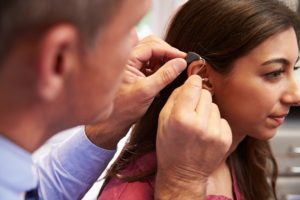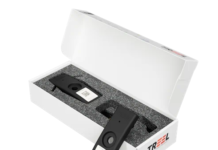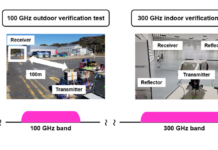
With Apple and Google removing the headphone jack from their latest smartphones and transitioning to wireless earbuds, it’s fair to say that wired audio connections are quickly going the way of the dodo. As these consumer electronics titans and ground-floor startups strive to develop “truly wireless” earbuds, the main design challenge they will face is maintaining all-day battery life. It’s interesting to note that hearing aids solved this problem many years ago and can run for 7-10 days on a single, tiny battery.
One main difference is that hearing aids predominantly focus on processing speech to restore its intelligibility to the wearer, whereas consumer earbuds are more about rendering stereo music. As such, hearing aids typically do not contain a power-hungry Bluetooth Classic radio, which can receive audio streamed directly from any mobile phone. But, you’d be hard-pressed to find a high-end hearing aid today that doesn’t have at least two radios inside: a Near Field Magnetic Induction (NFMI) radio for ear-to-ear transfer of audio and data, and a multi-protocol, 2.4 GHz radio for far-field communications. Using the far-field radio, today’s hearing aids can connect to your mobile device using Bluetooth low energy technology and exchange data at modest rates. They can also stream audio from a remote accessory, provided that accessory “speaks the same wireless language” (or protocol). Using their own proprietary wireless protocol, Apple smartphones can connect directly to most high-end hearing aids and stream audio into the wearer’s ears without requiring an intermediate device. These custom protocols operate in the worldwide available 2.4 GHz radio band, which is the same for Bluetooth Classic and Bluetooth low energy. Naturally, this type of connectivity does have an effect on battery life, but hearing aids can still run for days between battery changes with users taking regular advantage of these wireless features.

Wireless connectivity has opened the door for some exciting new features for hearing aid wearers. Not only can they use their smartphone as a convenient remote control for their hearing aids, but the sky is the limit in terms of what else they can adjust and fine-tune. Mobile app developers can take advantage of advanced features like geo-location and big data to effectively crowd-source hearing aid settings for a given location and acoustic environment. We are already seeing features like this in the market today, and given the recent Over The Counter (OTC) legislation in the United States it won’t be long before devices one can “self-fit” show up on your local pharmacy shelf.

To properly take advantage of these features, a mobile application must know how to communicate with the hearing aid to adjust its many parameters. Today’s audiologists are bound by complex fitting software running on a PC to fit (adjust) the hearing aid to a new wearer’s condition. Now that wireless connectivity to smartphones is ubiquitous, it is easy to imagine this procedure happening remotely where hearing aid wearers cannot easily travel to see an audiologist. Additionally, mobile apps could expose a sub-set of these complex adjustments through novel user interfaces, allowing a select customer segment to be able to self-fit where conditions allow. This is an exciting new area ripe for innovation.
As part of the Ezairo® Preconfigured Suite (Pre Suite), our Mobile Software Development Kit (SDK) provides the middleware that enables hearing aids to seamlessly interface with smartphones. Developers now have access on both iOS and Android to the same high-level APIs they have used for years on PC platforms. Combined with ON Semiconductor’s hearing aid firmware bundles and Bluetooth low energy-enabled smartphones, this forms a complete solution that will enable hearing aid manufacturers to usher in a new era of smart, connected hearing aids.
For more information visit On Semiconductor Blog post



















